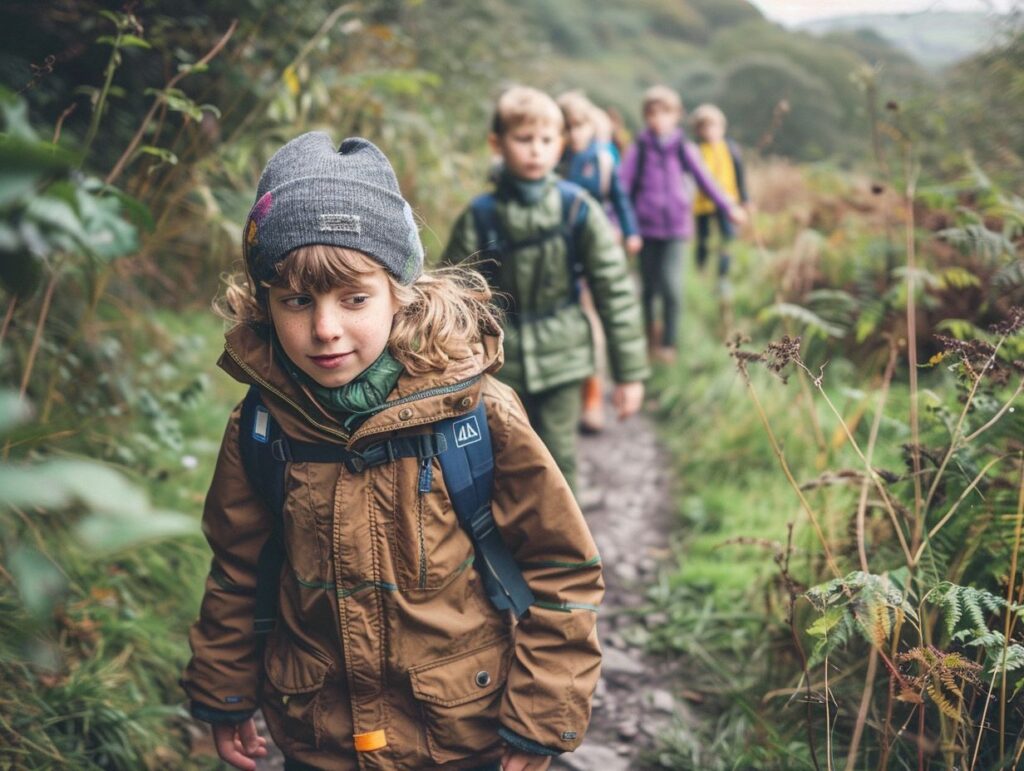Looking to get your kids outdoors and engaged with nature? Look no further than the UK’s exciting hiking trails! From the mystical Fairy Pools in the Isle of Skye to the stunning Seven Sisters in the South Downs National Park, there are plenty of fun and educational options to explore.
In this article, we’ll also discuss activities like nature scavenger hunts and geocaching, as well as share tips for keeping kids interested and engaged on the trail. Let’s get hiking!
Key Takeaways:
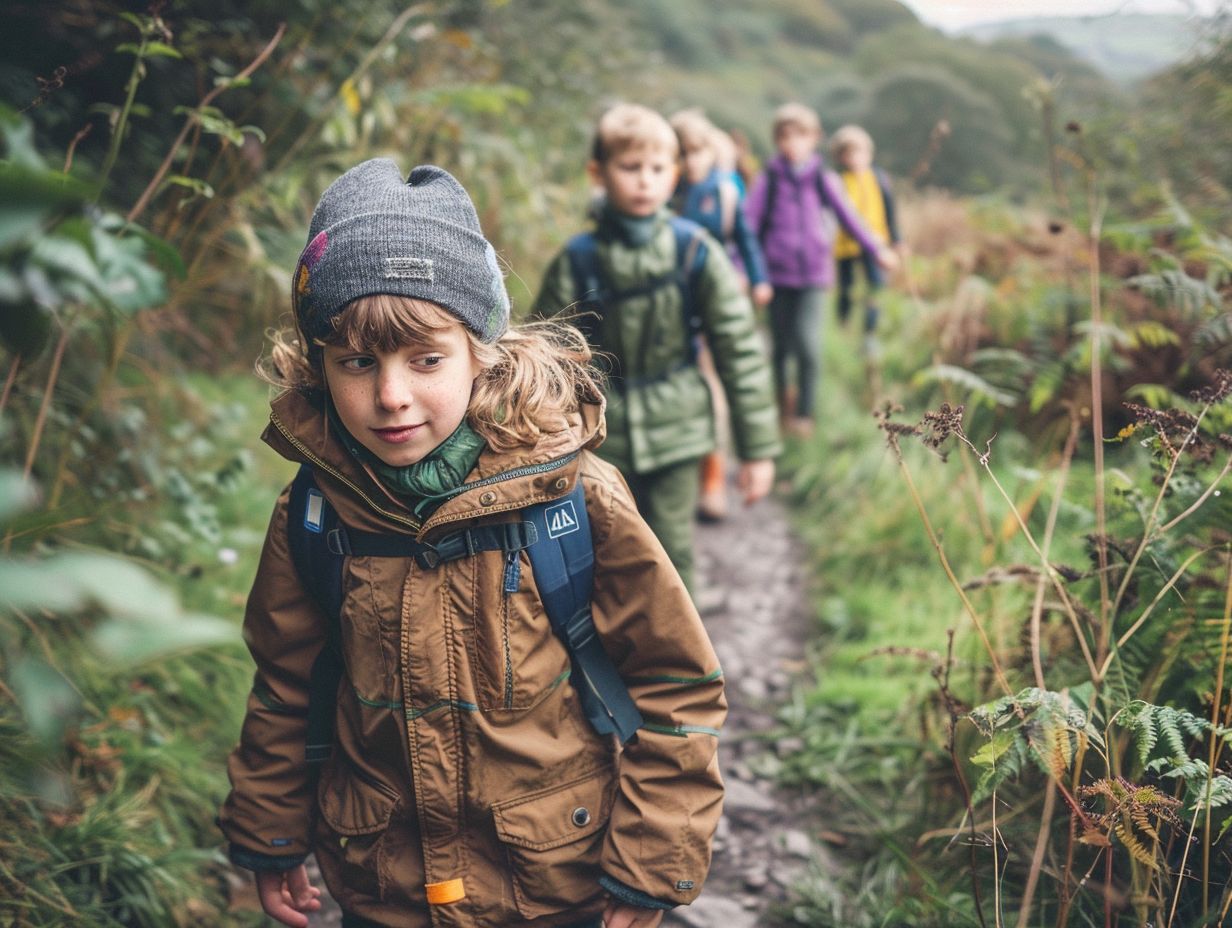
- Experience the magical Fairy Pools in Isle of Skye, the rocky landscape of The Roaches in Peak District, the beautiful Lost Gardens of Heligan in Cornwall, and the stunning Seven Sisters in South Downs National Park.
- Kids can engage in a variety of fun and educational activities on a hiking trail, such as nature scavenger hunts, geocaching, plant and animal identification, and journaling and sketching.
- Keep kids interested and engaged on a hike by playing games, taking breaks, involving them in planning and navigation, and encouraging them to explore their surroundings.
Fun and Educational Hiking Trails in the UK
Exploring the varied landscapes of the United Kingdom with your family can offer a mix of enjoyment and educational enrichment.
In these landscapes, there are numerous walking trails that offer a variety of outdoor adventures, ranging from the picturesque peaks of Snowdonia National Park to the scenic coastal routes of the South West Coast Path and the striking ruggedness of the Peak District National Park.
1. The Fairy Pools, Isle of Skye
The Fairy Pools located on the Isle of Skye represent a captivating hiking destination suitable for families, providing a magical outdoor experience characterized by crystal-clear blue pools and scenic waterfalls. Situated amidst the rugged Cuillin Mountains, this trail is highly regarded for its breathtaking natural beauty and serene ambience.
The vibrant colours of the pools set against the verdant backdrop of the surroundings form a truly captivating view that attracts hikers of all age groups.
Families have the opportunity to engage in activities such as wading in the invigorating pools, discovering concealed grottos, and admiring the cascading waterfalls that line the trail.
To optimise this adventure, it is advisable to equip oneself with essentials like water, snacks, sturdy footwear, and a camera for capturing the picturesque landscapes. Embarking on the journey early in the day enables a more relaxed pace and affords ample time to revel in the environment without feeling rushed.
2. The Roaches, Peak District
The hiking trail known as The Roaches in the Peak District National Park presents an exceptional outdoor adventure ideal for families, featuring captivating views and distinctive rock formations. Renowned for its challenging terrain, the trail offers an exhilarating experience suitable for walkers of various skill levels.
Families setting off on this journey will be treated to expansive vistas that extend for miles, complemented by the enchanting rock formations that defy conventional expectations.
The Roaches trail offers families a valuable opportunity to bond through a shared outdoor pursuit, creating enduring memories amidst the splendour of nature.
It is essential for walkers to equip themselves with appropriate hiking gear such as durable footwear, water, snacks, and suitable clothing in order to fully appreciate and safely navigate this adventure.
3. The Lost Gardens of Heligan, Cornwall
The Lost Gardens of Heligan in Cornwall offer a distinctive hiking experience suitable for families, allowing visitors to explore a meticulously restored garden featuring hidden paths and discover the region’s rich historical and wildlife significance.
Young visitors to the gardens have the opportunity to participate in educational activities, including treasure hunts designed to find the rare species of plants and animals inhabiting this charming location.
Along the paths, children can immerse themselves in the fascinating stories of the gardens from a past era, such as the remarkable restoration efforts that revived this once-lost sanctuary.
Interactive exhibits and botanical workshops fascinate young adventurers, fostering an appreciation for nature and history through an engaging and immersive approach.
4. The Seven Sisters, South Downs National Park
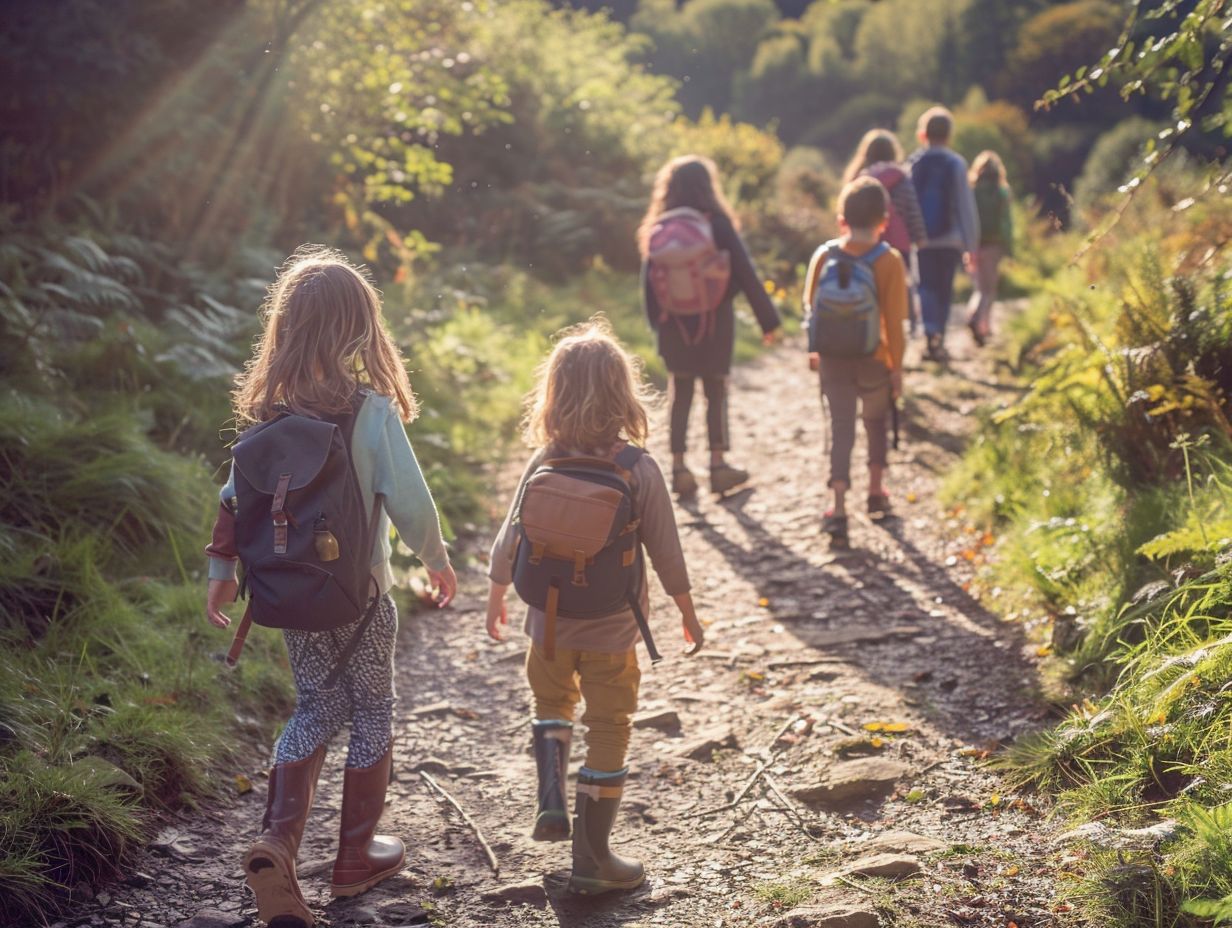
The Seven Sisters in South Downs National Park offers an awe-inspiring hiking trail that runs along the chalk cliffs, presenting an ideal outdoor adventure for families seeking to relish panoramic views of the sea and invigorating coastal breezes.
The trail winds through undulating green hills and aromatic meadows, providing a tranquil retreat into nature. The region’s rich variety of flora and fauna renders it a haven for wildlife enthusiasts and photographers alike. Families have the opportunity to gaze at the remarkable white cliffs and turquoise waters below, fostering a sense of connection to the ancient terrain.
For safety purposes, it is advisable to adhere to designated paths, particularly when accompanied by young children, and to bring an ample supply of water and snacks. The use of sturdy footwear with reliable grip is imperative for negotiating certain steep portions of the trail.
What Activities Can Kids Do on a Hiking Trail?
Hiking paths provide a wide range of activities that can involve children and enhance the overall enjoyment and educational value of the family adventure.
1. Nature Scavenger Hunt
A nature scavenger hunt is an excellent activity for children to engage in while on a hiking trail. It provides them with the opportunity to explore and gain knowledge about the local flora and fauna in an enjoyable manner.
To conduct a successful nature scavenger hunt, it is advisable to compile a list of items that are commonly found in the area, such as a pine cone, a specific type of leaf, a feather, or a piece of bark. Additionally, integrating educational aspects into the activity can enhance its value.
This can be achieved by including tasks that require participants to identify various bird calls, track animal footprints, or learn about specific plant species. By stimulating their senses and fostering their curiosity, children not only derive pleasure from the adventure but also expand their understanding of the natural environment surrounding them.
2. Geocaching
Geocaching presents an exhilarating and adventurous opportunity that enhances a hiking excursion by transforming it into a treasure-hunting expedition for children, thereby augmenting the interactive and engaging aspects of trail exploration.
Participants engage in this activity by utilising GPS devices or smartphones to navigate to specific coordinates at which hidden containers, known as geocaches, are situated. These containers typically house trinkets or logbooks, with the primary goal being their discovery.
Geocaching serves as an effective method for imparting navigation skills and cultivating patience in children, all while nurturing a fondness for the outdoors.
When venturing on a geocaching escapade with children, it is advisable to pack essential items such as water, snacks, sunscreen, and suitable footwear to ensure their comfort and safety.
By promoting teamwork and encouraging problem-solving, geocaching provides an entertaining and educational encounter that not only ensures children remain active but also fosters their engagement with nature.
3. Animal and Plant Identification
The identification of animals and plants is an educational endeavour that has the potential to enhance a child’s hiking experience by providing insight into the biodiversity of the area.
One effective method of acquainting children with the local wildlife and flora involves utilising field guides that are tailored to their needs. These guides are typically characterised by vibrant illustrations and straightforward descriptions, which facilitate the identification of various species by young learners.
To further enrich this educational experience, the activity can be transformed into a scavenger hunt.
By furnishing children with a checklist enumerating specific plants or animals to be located during the hike, they are encouraged to actively seek and observe these elements. This hands-on approach not only imparts knowledge but also cultivates a spirit of inquisitiveness and enthusiasm towards the natural world.
4. Journaling and Sketching
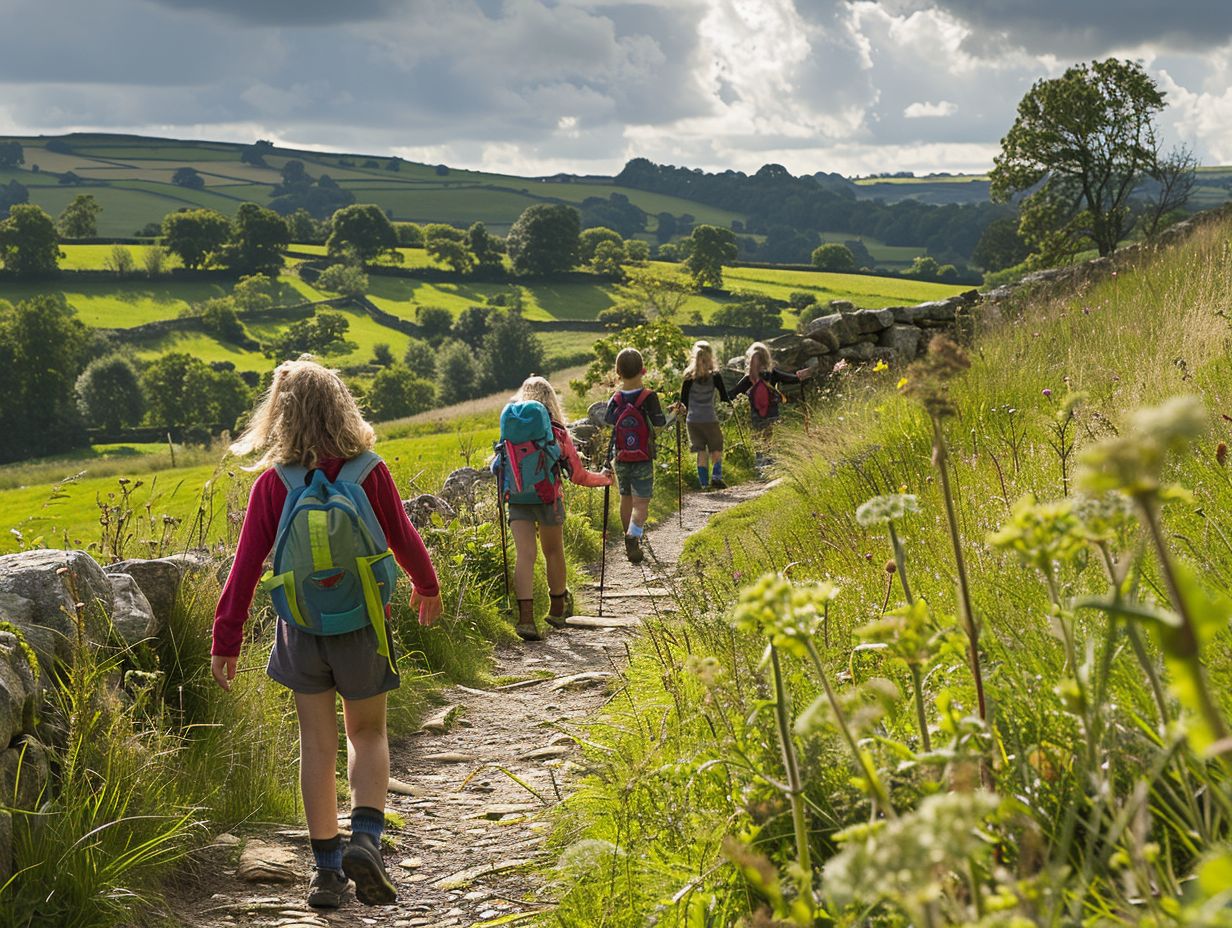
Journaling and sketching serve as excellent activities for children whilst on a hiking trail, enabling them to document their adventure and cultivate their creativity whilst observing natural surroundings.
Encouraging youngsters to chronicle their hiking experiences can deepen their connection with nature, enhance their observational skills, and refine their writing abilities. Carrying a compact notebook or sketchpad, accompanied by coloured pencils or markers, offers an ideal method to capture the sights and sounds encountered during the hike.
Equipping children with these essential tools can inspire them to record their reflections, illustrate the scenery, and even note down intriguing information about flora and fauna encountered along the trail.
Tips for Keeping Kids Engaged and Interested on the Trail
Maintaining children’s engagement and interest during a hiking excursion can present challenges; however, employing appropriate tips and strategies can transform the hike into a memorable adventure for the whole family.
1. Play Games
Engaging in leisure activities can enhance the experience of children on a hiking trail, fostering entertainment and engagement throughout the journey. Games such as ‘I Spy‘ prompt young hikers to attentively observe their surroundings, nurturing a stronger connection with nature.
Similarly, ‘20 Questions‘ stimulates curiosity and critical thinking, introducing an element of challenge and amusement to the hiking experience. Additionally, ‘Trail Bingo‘ transforms the identification of wildlife and unique plant species into an exhilarating scavenger hunt.
These leisure activities serve not only as a source of entertainment but also as educational tools that encourage learning and appreciation for the outdoors, enhancing the overall hiking experience.
2. Take Frequent Breaks
Taking regular breaks is essential when hiking with children, as it allows them to rest, refuel, and sustain their energy levels throughout the trail.
Strategically planning these breaks not only ensures the welfare of the children but also enhances the overall hiking experience. These intervals provide opportunities for activities such as consuming nutritious snacks, maintaining hydration, and participating in brief recreational games, which serve to keep the young hikers invigorated and motivated.
It is essential to schedule breaks at consistent intervals and select locations with picturesque views or intriguing attractions for exploration. By integrating these moments of rest and enjoyment into the hiking trip, parents can enhance the pleasure of the journey and create lasting memories for the whole family.
3. Involve Them in Planning and Navigation
Engaging children in the planning and navigation aspects of a hike can create a greater sense of involvement and responsibility, thereby enhancing their adventure experience. Allowing children to select the trail give the power tos them and aids in the development of decision-making skills.
The utilization of maps during the planning phase not only educates them on geography and spatial awareness but also improves their critical thinking capabilities. Implementing navigation tools such as compasses or GPS devices can introduce children to practical problem-solving techniques and technology.
This interactive participation nurtures curiosity, stimulates an interest in outdoor exploration, and motivates active engagement throughout the journey.
4. Encourage Exploration
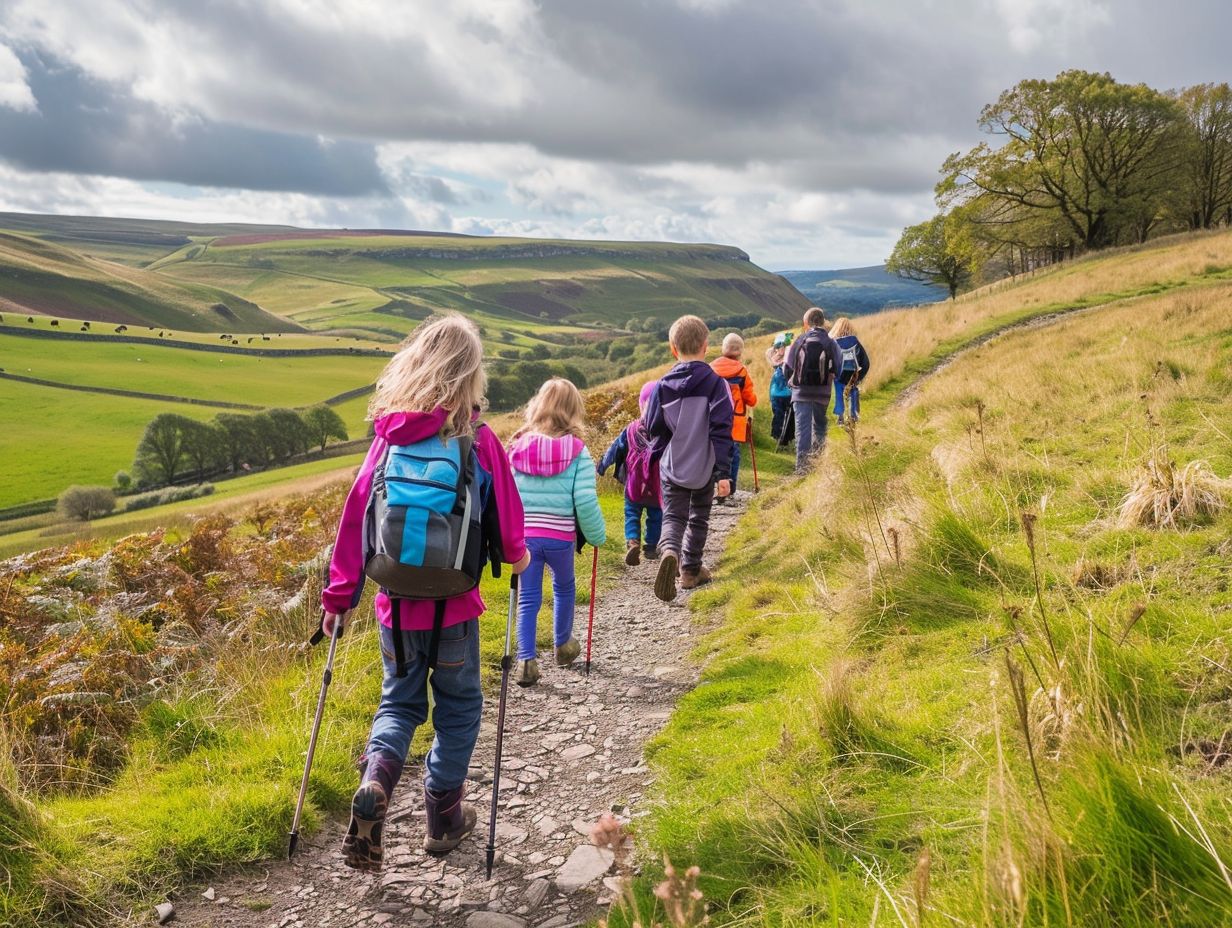
Fostering an environment that promotes exploration allows children to uncover new knowledge and maintain a sense of curiosity, transforming a hiking trail into an engaging journey ripe with educational and enjoyable experiences. It is imperative to strike a delicate balance between nurturing this spirit of adventure and prioritising safety.
One effective approach involves establishing clear boundaries with the child prior to commencing the hike. Providing explicit instructions on restricted areas and specifying checkpoints where they are required to report back to you can aid in maintaining a safe environment.
Constant supervision is essential, particularly in circumstances that pose potential risks such as steep ascents or proximity to bodies of water.
Encouraging children to enquire about their surroundings and actively engage with the environment is crucial, while concurrently educating them on the importance of being mindful of potential dangers.
Frequently Asked Questions
Can I bring my infant on a hiking trail in the UK?
It is not recommended to bring infants on hiking trails, as they may not be able to handle the physical demands and may be a safety risk. It is best to wait until your child is at least 3 years old before taking them on a hiking trail.
Are there any trails suitable for toddlers?
Yes, there are many short and easy trails in the UK that are suitable for toddlers. These trails are usually less than a mile long and have flat, well-maintained paths. It is important to check the difficulty level and terrain of the trail before bringing your toddler.
What kind of educational activities can my child do while hiking?
There are many fun and educational activities your child can do while hiking. Some ideas include identifying different plants and animals, learning about the history and geology of the area, and practicing map reading and navigation skills. You can also make it a scavenger hunt and challenge your child to find certain objects along the trail.
Do I need to bring any special equipment for my child on a hiking trail?
It is important to bring appropriate gear for your child, such as comfortable and sturdy shoes, plenty of water, and snacks. Depending on the weather, you may also need to bring sunscreen, hats, and extra layers. It is also recommended to bring a first aid kit and insect repellent.
Can I bring a stroller on a hiking trail?
It is not recommended to bring a stroller on a hiking trail as they may not be suitable for the terrain and can be difficult to maneuver. Instead, consider bringing a carrier or backpack for your child, or choose a trail that is stroller-friendly.
Are there any trails in the UK that are specifically designed for kids?
Yes, there are several trails in the UK that are designed specifically for kids, with interactive activities and educational components. These trails are usually shorter and have child-friendly signs and markers. Some popular ones include Gruffalo Trail, Stick Man Trail, and Zog Trail.

